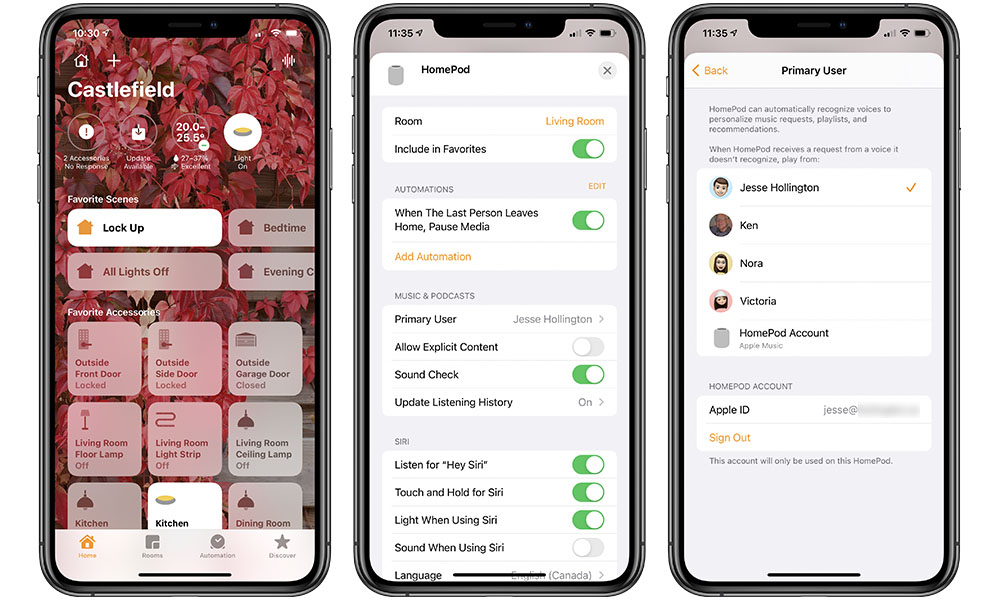Everyone in Your Home Can Now Have Their Own ‘Personal’ HomePod with iOS 14.3
 Credit: Apple
Credit: Apple
Toggle Dark Mode
Following Monday’s release of iOS 14.3 and watchOS 7.2, Apple has also pushed out “Software Version 14.3” for the HomePod and HomePod mini, and while the release notes only list the typically vague “general performance and stability improvements,” there’s actually at least one interesting new improvement buried in here that larger families will appreciate.
First spotted by The 8-bit, it looks like users who have updated all of their HomePods to the latest software will now be able to access a new setting in the Home app that allows each individual HomePod to be assigned to a different default user.
Apple added multi-user support to the HomePod last year using voice recognition to identify each user in the family, and while that feature works really well, it not only requires that individual users train the HomePod to recognize their voice, but also that they be invited to your home and connected under a single Apple ID.
This latest change essentially untethers all of the HomePods in your home from having to share a primary family account, allowing each individual HomePod or HomePod mini to be signed in with a different Apple ID.
The change also allows for the possibility of limiting access to HomeKit devices that would otherwise be controllable from the primary user’s Apple ID. Although at this point HomeKit still lacks the ability to set granular restrictions on devices or rooms, you can now sign in to each HomePod using any Apple ID, regardless of whether that user has been invited to share your home controls or not.
Keep in mind that none of this will disable the HomePod’s ability to recognize you or other home users by voice, so even if you sign a HomePod into a completely different Apple ID, known users can still make personal and home automation requests which will be processed just as they always have been — assuming the HomePod recognizes your voice.
However, in the past, all HomePods would default to the primary home user when dealing with unrecognized requests. With this latest change, each individual HomePod can be assigned to either another home user, or any other Apple ID, which will be used instead for handling requests from unknown voices.
How to Set It Up
So if you’re buying a HomePod mini to put in your kids’ room, for instance, you can assign it to default to their account, and they won’t even have to train it to recognize their voice, as all unrecognized requests made to Siri on that specific HomePod will use their account by default.
However, as long as the parents have set up voice recognition, they can still walk into the kids’ room and make requests of that HomePod mini just as they always have, and have them processed using their own accounts.
Here’s how to assign an individual HomePod to a different default user:
- Open the Home app on your iPhone or iPad.
- Press and hold on the HomePod (or group of HomePods) that you want to re-assign.
- Scroll down to view the settings.
- Under Music & Podcasts tap “Primary User.” You’ll be shown a list of users who have been invited to your Home.
- Either select a user from the list, or choose “HomePod Account” and sign in with another Apple ID.
Note that for security and privacy reasons, setting the default user here only affects listening to services such as music and podcasts so that users will be able to access their own playlists and not risk skewing everyone else’s listening histories.
Making personal requests for messages, calendar appointments, reminders, notes, and the new Personal Update feature requires the HomePod to actually recognize your voice, regardless of which user is designated as the primary; unrecognized voices will not only prompt Siri to ask who is speaking, but depending on the request may also require you to unlock your iPhone for additional verification.







